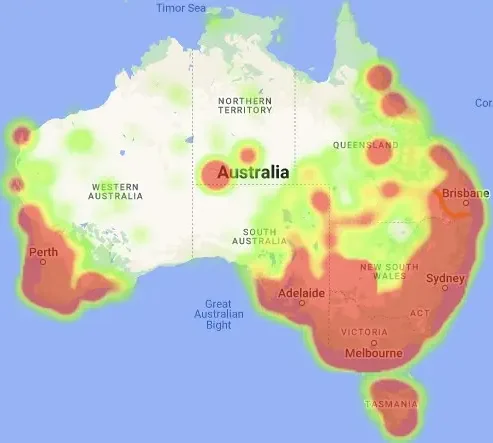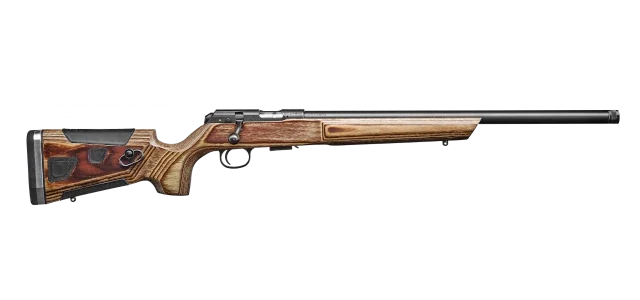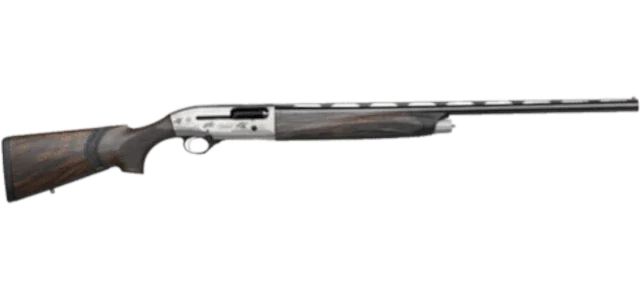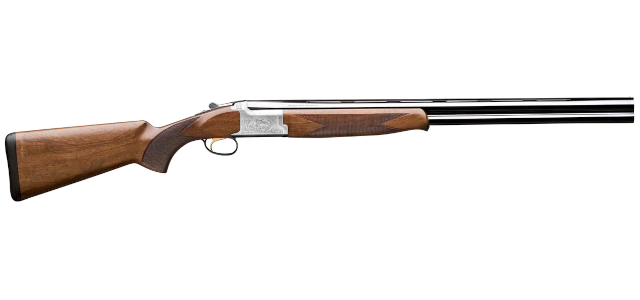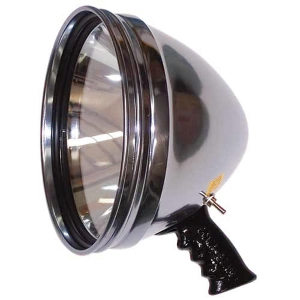

Rabbit Hunting
Rabbit hunting, there was a time in Australia when just about everyone had a bunny gun. They are still one of Australia’s most destructive feral species and hunted frequently.
Table of Contents
Rabbit hunting, there was a time in Australia when just about everyone had a bunny gun. The feral rabbit was in plague proportions across the country and .22 was generally on hand to help curb the numbers (not terribly successfully). My father and grandfather coming home from work near the city of Adelaide would shoot a couple of rabbits on their way home to the southern suburbs. Rabbit stew was pretty popular. Even on holidays some of my father’s time would be spent in South Australia’s mallee with relatives on the land where rabbit hunting was a daily chore. He was a fine shot (still is) and could skin and gut a rabbit in seconds using only his hands.
Description
The European rabbit (Oryctolagus cuniculus) is a small mammal native to southwestern Europe and northwest Africa, but as you will read, have been introduced to many other parts of the world including Australia.
The rabbits have a soft, short, and dense coat of fur that can vary in color from gray-brown to reddish-brown to black. A lining of this fur helps keep their long ears warm, ears which can be up to 10 cm (4 inches) in length. Long hind legs are more powerful than their front legs, which allows them to run and evade predators.

Adult European rabbits typically weigh between 1 and 2.5 kg (2 to 5.5 pounds) and are about 30 to 40 cm (12 to 16 inches) long.
They are herbivores and primarily feed on grasses, leaves, and other vegetation. They have a complex digestive system that allows them to extract as much nutrition as possible from their food. This has proved to be a major factor in allowing them to thrive in Australia’s harsh interior.
Being social animals they tend to live in colonies and breed like, well, rabbits. Which is year round with multiple litters of three to eight young (kittens).
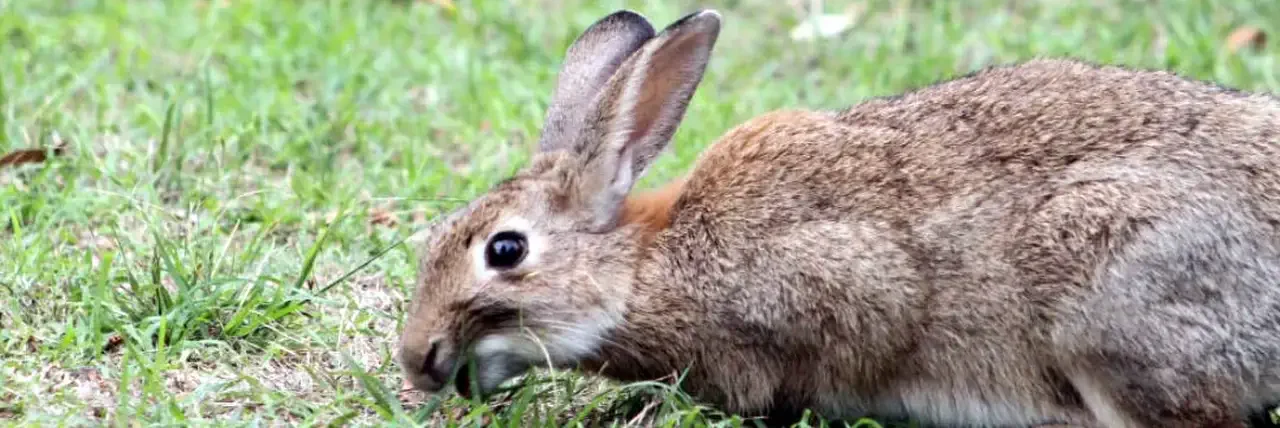
Taxonomy
European rabbits:
- Scientific name – Oryctolagus cuniculus
- Kingdom – Animalia
- Class – Mammalia
- Order – Lagomorpha
- Family – Leporidae
- Genus – Oryctolagus.
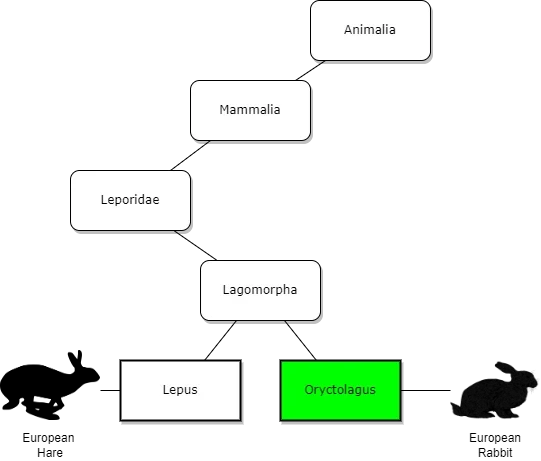
A brief history and distribution
Europe
About 20,000 years ago, things were not looking good for the European rabbit. The species looked as if it was heading for extinction with the habitat of the rabbit shrinking during the last ice age. The population was largely restricted to the warmest regions of southern Portugal, Spain, France and Northern Morocco.
Short grasslands with scrub, rocks and the odd patch of trees are a European rabbit’s dream home. Man, increasingly turning to clear land for agriculture played a large part in turning around the rabbit’s situation.
The rabbits thrived and except for Antarctica, were soon “exported” to every continent on earth.
Fun fact: “It is believed Spain was named after Ispania, which means ‘land of the rabbits’.“
Australia
Five rabbits were noted on the manifest of the first fleet that arrived in Australia in 1788. However, it is thought these animals did not contribute to the invasive spread.
It was not until Christmas day, 1859 a joker by the name of Thomas Austin deliberately released 24 European wild rabbits on his property Winchelsea, Barwon Park, Victoria ( near Geelong) that the major spread began.
Just seven years later hunters bagged 14,000 on that same property!
By the Late 1940’s the rabbit population in Australia was estimated at 600 million.

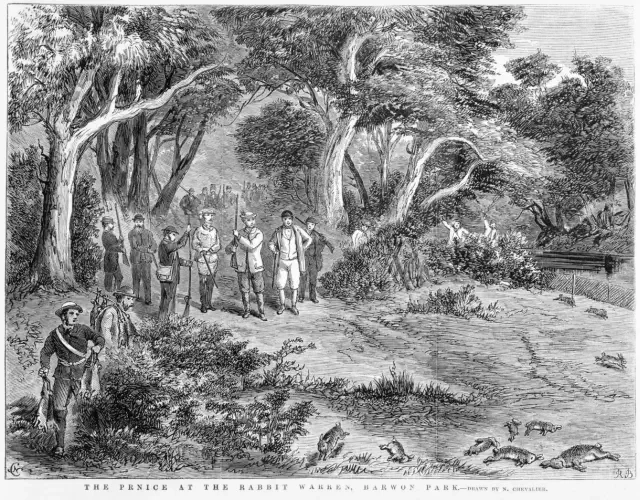
DNA testing the origins of the European rabbit in Australia
Thanks to a study published in Proceedings of the National Academy of Sciences (PNAS) journal, a team of researchers from the University of Cambridge and the Research Centre in Biodiversity and Genetic Resources in Porto, Portugal (CIBIO), we now know the “invasion” arose from the single introduction by Austin.
William, Austin’s brother sent the rabbit’s on the ship Lightning from a property owned by the family in Baltonsborough, Somerset, England on the 6th October 1859.
We managed to trace the ancestry of Australia’s invasive population right back to the South-West of England, where Austin’s family collected the rabbits in 1859,”
Dr Joel Alves University of Oxford and CIBIO Institute.
More on the DNA testing can be found here:
DNA profiling solves Australian rabbit plague puzzle
By Tom Almeroth-Williams Published 22nd August 2022
Video - Defining Moments: Introduction of Rabbits to Australia
Deserts proved to be of no hindrance to the distribution. By 1894 the rabbits had spread as far as Western Australia.
Distribution
the rate of spread of the rabbit in Australia was the fastest of any colonising mammal anywhere in the world
Bureau of Resource Sciences and CSIRO Division of Wildlife and Ecology

Video - 160 year battle against one of Australia's worst invasives 🐇
Habitat
Landscape
“Short grasslands with scrub, rocks and the odd patch of trees” add a warm climate, easy digging soil and few predators. It is little wonder the bunnies loved Australia.
Rabbits thrive where ever there is food and soil for easily dug warrens. They tend to be scarce in rocky ground and avoid clay soils. Australia, being geologically old has eroded to the point where most of the inland is covered by deep sandy soil. Even in arid areas rabbits can survive with little or no water if they can derive enough water from their food source.
Burrows, warrens and Dens
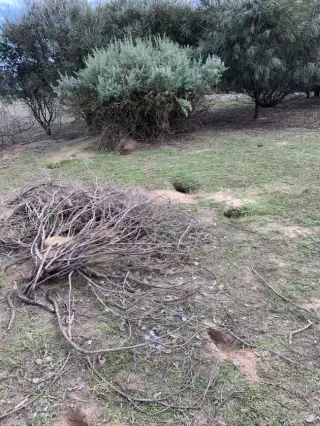
Rabbits form extensive warrens for shelter and these burrows also offer protection from predators. They generally venture no more than 30m from the safety of the rabbit hole.
While the warren can be central to the rabbits existence, they can also exist without them if there is enough dense ground cover. Fallen trees, branches and tight patches of scrub can be sufficient.
Human activity does not deter them either. They are known to use sheds, stockyards and even houses as cover.
Current locations
Find a paddock or open area with conditions outlined in the previous section and you will most likely find rabbits.
Thanks to mobile apps you can fine tune that location using an app called RabbitScan.
RabbitScan
From their website
“RabbitScan is a free resource for landholders, Landcare groups, community groups, local Councils, professional pest controllers and biosecurity groups. It has been designed by landholders for communities, and it is very easy to use.”

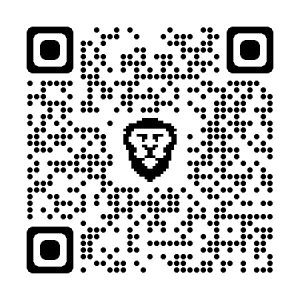
RabbitScan Heatmap
The data from the app is collated into an online heatmap. RabbitScan Sighting Map
Rabbit Hunting Regulations
Rabbit hunting in Australia has separate regulations for each state and territory. Regardless of where you are in Australia a current firearms license is required for rabbit hunting. Always check with the state authorities for the latest regulation updates.
Firearms and ammunition must be stored and transported in compliance with current laws.
Australian Capital Territory (ACT)
You can hunt rabbits with a current firearms licence on private property with landowners’ permission.
New South Wales (NSW)
You can hunt rabbits without a licence on private land (and permission of the land owner).
In state forests (public hunting lands) a Restricted Game Hunting Licence (R-Licence) is required and written permission issued by the NSW Department of Primary Industries Game Licensing Unit DPI GLU.
Northern Territory (NT)
You can hunt rabbits with a current firearms licence on private property with landowners’ permission.
Queensland (QLD)
You can hunt rabbits with a current firearms licence on private property with landowners’ permission.
South Australia (SA)
You can hunt rabbits with a basic Hunting Permit (and written permission of the land owner given within the previous six months).
More information : Hunting rabbits in South Australia
Tasmania (TAS)
You can hunt rabbits with a current firearms licence on crown land, state forest and private property with landowners’ permission.
More information : Hunting rabbits in Tasmania
Victoria (VIC)
You can hunt rabbits with a current firearms licence on state forest and private property with landowners’ permission.
More information : Hunting rabbits in Victoria
Western Australia (WA)
You can hunt rabbits with a current firearms licence on private property with landowners’ permission.
Hours of activity
Feral rabbits are generally active from late afternoon to early morning. Emerging from their warrens a few hours before dusk. They can be found at any time however if there is a large population or are in an area where they remain undisturbed. Overall it would be fair to say that the best time for rabbit hunting is at night.
Most hunts I have done have been by spotlight as would be true of most Aussie rabbit hunters.
We have no empirical data on numbers but it is likely thermal imaging is playing an increasing role in rabbit hunting at night.
Food sources
Rabbits are herbivores and as noted usually graze during the night. Not satisfied with what is above the surface they dig and eat the grass roots and seeds. This of course destroys the plant and is one of the reasons rabbits can be so devastating to the Australian landscape. Furthermore, they ringbark trees and bushes adding to the devastation. This is amplified during times of drought when traditional food sources are scarce.
Hunting rabbits - Shooting
There are many ways of controlling rabbits within Australia but we are primarily covering shooting or ground shooting as it is called in official literature.
Government guidelines
Under the Australian Constitution, pest management is the responsibility of the state and territory governments.
pestSMART
PestSmart is managed through the Centre for Invasive Species Solutions (CISS) and received funding from the Australian Government.
PestSMART publish a document covering humane methods of shooting rabbits
GROUND SHOOTING OF RABBITS (RAB009) STANDARD OPERATING PROCEDURE
always worth a read.
General shooting guidelines
Hit a few inanimate targets before you start if you are unsure
A .22LR is not .50 cal Barrett so keep it real
See our article on Thermal Vision
Do not shoot near human habitat and know your bullet can travel a long way.
Never shoot blind over hills or ridges.
If you can’t really see it. Don’t shoot it!
If you cannot hit the head then look for a chest shot, if you can’t hit either then, no shot.
If the target is wounded then dispatch it quickly with a head shot.
Talk to the land holder and if needed get written permission.
Best Caliber for Rabbit Shooting
Two rifle calibers are common here and they are .22 and .17.
Shotgun gauges of 12, 16 and 20 are also used.
While shotguns can be used up to ranges of about 20m, they are usually left at home because the noise makes every bunny for miles head for a hole.
Best Cartridge for Rabbit Shooting
In our view, the best cartridges for rabbit shooting are:
Rifles:
Hollow-point or soft-nosed projectile
Ranges up to 100m
- Rimfire
- 22 rimfire
- 17 rimfire
- Rimfire
Ranges over 100m
- Centerfire
- 223
- 22-250
- 204
- Centerfire
Shotgun:
Ranges up to 20m
- Shot sizes No.4, No.5, No.6
Best with an improved cylinder choke
Best Rifle for Rabbit Shooting
Best Shotgun for Rabbit Shooting
Aiming marks
Head shot
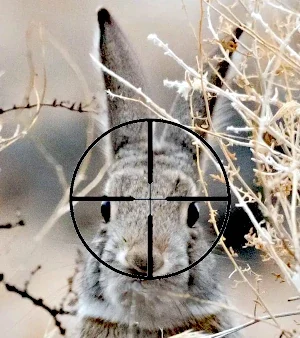
Head shot from the front, straight between the eyes.
Head shot from the side, just behind the eye.

Chest shot

Chest shot from the front, straight between the front shoulders.
Chest shot from the side, just behind the front shoulder.

Stalking rabbits
Stalking rabbits can be a challenge. Done properly, it can teach you a lot about fieldcraft and improve your skills with less wily prey.
The rabbit can startle easily and are usually within 50m of a rabbit hole or thick cover and they can cover that distance in very little time. Also be aware that while you have a warren eyeballed, the bunnies usually have several entrances and backdoor exits.
Time of day
If you are not an early riser then the best time for you to hunt rabbits will be dusk. A good long evening an hour before sundown can be fruitful.
Weather
The winds are a factor, as is rain. If it is like Cyclone Tracey outdoors it is a waste of time because the bunnies won’t like the wind and rain any more than you do and will be tucked up in their hole waiting for it to blow over.
Know where you are intending to hunt and approach from downwind.
Smell
Rabbits have a keen sense of smell so leave the Old Spice in the bottle until later. Keep in mind that any strong human smell, tobacco, or strong detergent that you washed your clothes in can give you away.
Noise
Like their sense of smell, they have exceptional hearing (you thought those ears were for show?) so keep noise to a minimum. Rabbits are also able to sense vibration so light footwork helps.
Route
Plan your way to the encounter with the wind and terrain in mind. Avoid silhouetting yourself on ridgelines and make use of scrub or features that will screen you from your quarry until you get close.
Clothing
No need to go full Rambo on the cam gear but it would be sensible to wear dull clothing. Rabbits also have decent eyesight. Wear some appropriate footwear as well, and probably leave the pluggers at home.
Firearm
Whatever you are using, make sure it is zeroed before you go.
This is not a definitive list but will suit most.
Rifles:
Shotgun:
Best with an improved cylinder choke
- 12 gauge
- Shot sizes No.4, No.5, No.6
- 16 gauge
- Shot sizes No.4, No.5, No.6
- 20 gauge
- Shot sizes No.4, No.5, No.6
- 12 gauge
Optics
You can of course use open sights. A good scope is nice and do not underestimate the value of a good set of binos, it opens up your field of view and optically intensifies light. With your scope, it would be nice to have a good size objective lens as the light will be fading as the sun sets.
Always have your scope set to low magnification because it widens your field of view and you can locate your target quicker.
Getting close
Make big moves when you are far from your target and really slow down when you get close.
That also goes for raising your firearm or optic, take it slow.
Stop and go
Move a distance then prop and watch for a few minutes. Cover your intended route with your eyes before your feet. Look around, it is not unknown for your targets to appear behind you.
If you have eyes on your target then try and get into position and move when they have their head down feeding.
Making the shot
- Positively identify the target, always.
- Go for a clean kill, headshot or chest shot.
- Ensure the animal is dead before you move on.
If you intend to dress the rabbit, a knife is handy if you don’t know how to do it with bare hands.
Rabbit Hunting at Night
Rabbits, like a lot of wildlife in Australia, have dichromatic vision, which means they only see color in blues and green. Humans have trichromatic vision which means we see a third color, red.
Spotlights
Light temperature is measured in Kelvin, the lower temperature of the light the warmer and softer it appears. Compared to LEDs and HIDs, halogen spotlights have a lower temperature therefore seem soft and warm. You can pick up movement better and also detail such as shadows because halogen spotlights have better color rendering and contrast.
Read more on spotlights here: Hunting Spotlights
Eye shine
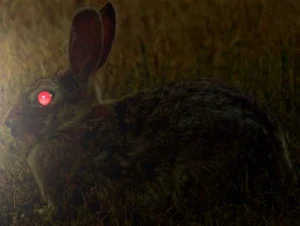
Under the beam of a spotlight a rabbits eye shine is pink in color. Another reason to use halogen spotlights as the eye shine is enhanced.
Halogen Spotlights
Night Vision
Night Vision is the ability to see in low light conditions. The emphasis being on low light, these devices will not operate in no light conditions.
Night vision devices (NVD’s) are optoelectronic units which enhance visible light via image intensification.
This process turns photons of light from the objective lens of the device into electrons. It then amplifies the electrons and turns them back into photons which are presented to the viewers eye via the ocular lens.
Read more on night vision here: Night Vision
When to use Night Vision for rabbit hunting
- Nights with an over abundance of light – NVD’s come into their own on those bright nights, a near full moon for example, when spotlights don’t work too well. You may also be hunting near a well lit mining site (with permission of course), again, spotlights won’t be worth a cracker.
- Hunting near sensitive livestock – Many farmed animals get spooked with a high powered spotlight bouncing around their habitat. NVDs are a passive alternative.
Night Vision Devices


Thermal Vision
Thermal Vision has the ability to see in absolutely no light conditions. The beauty of these devices is that they will operate in all ambient light conditions. Smoke, dust, fog, scrub. Thermal optics just do not care, as long as there is a temperature differential, these devices will show it.
Thermal vision devices detect invisible infrared waves in the thermal spectrum. That is, rather than rely on visible light to reflect off an object. It detects heat, maps the pattern, then converts it to data that is then shown on your screen.
As thermals have an onboard computer to do all this data manipulation. They make use of the capacity for a whole swag of cool stuff like, onboard ballistics calculators, one shot zeroing and lots more.
Read more on thermal vision here: Thermal Vision
When to use Thermal Vision for rabbit hunting
- Cool, overcast nights with no moon are ideal for thermals, particularly if your targets are a little gun/spotlight shy and like hiding in light scrub or blackberry bushes.
- Hunting near sensitive livestock – Many farmed animals get spooked with a high powered spotlight bouncing around their habitat. Thermals are another passive alternative.
Thermal Vision Devices

Using a Rabbit Call
Rabbit calling is a technique (some might say an art) that can be used to draw rabbits out of hiding or pop their head up to get that clean shot. This is especially useful when hunting in areas with a lot of scrub or other cover where bunnies may be hiding.
To lure rabbits out of cover or even from the depths of a warren, you can use a variety of methods to make sounds that will attract a rabbit. (No. Hiding behind a bush making a noise like a carrot will not work. But then, I have never tried it.)
Using a handheld rabbit call does work. So does scraping a piece of Styrofoam across the face of your mobile phone ( I kid you not). You can even download a Mobile App that you can use.
Suggested method:
- Use your rabbit call of choice for about five minutes and then wait.
- If no joy, rinse and repeat two or three times.
- The desired result is for the rabbits to get curious and stick their head up or come topside for a look.
FAQ (Frequently Asked Questions)
Is rabbit hunting legal in Australia?
Regardless of where you are in Australia a current firearms license is required for rabbit hunting. If you have permission from the landholder, rabbits can be hunted in Australia, unless stated otherwise in local regulations. Australian states and territories have separate laws for their own region, therefore it is a good idea check with the state authorities for the latest legal conditions.
What kind of gun do you use for rabbit hunting?
Rifles:
- Rimfire
- 22 rimfire
- .22 Long Rifle
- .22 Winchester Magnum Rimfire
- .17 rimfire
- .17 Hornady Magnum Rimfire
- 22 rimfire
- Centerfire
- 223
- .223 Remington
- 22-250
- .22-250 Remington
- 204
- .204 Ruger
- 223
Read more on Basic Cartridge Selection
Shotgun:
- 12 gauge
- Shot sizes No.4, No.5, No.6
- 16 gauge
- Shot sizes No.4, No.5, No.6
- 20 gauge
- Shot sizes No.4, No.5, No.6
Photo Credits: National Museum of Australia, University of Cambridge, Proceedings of the National Academy of Sciences, Research Centre in Biodiversity and Genetic Resources (CIBIO), Government of South Australia Department of Primary Industries and Regions (PIRSA)
